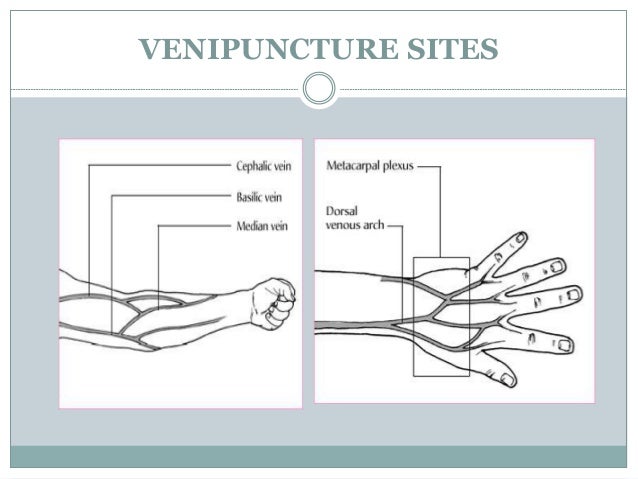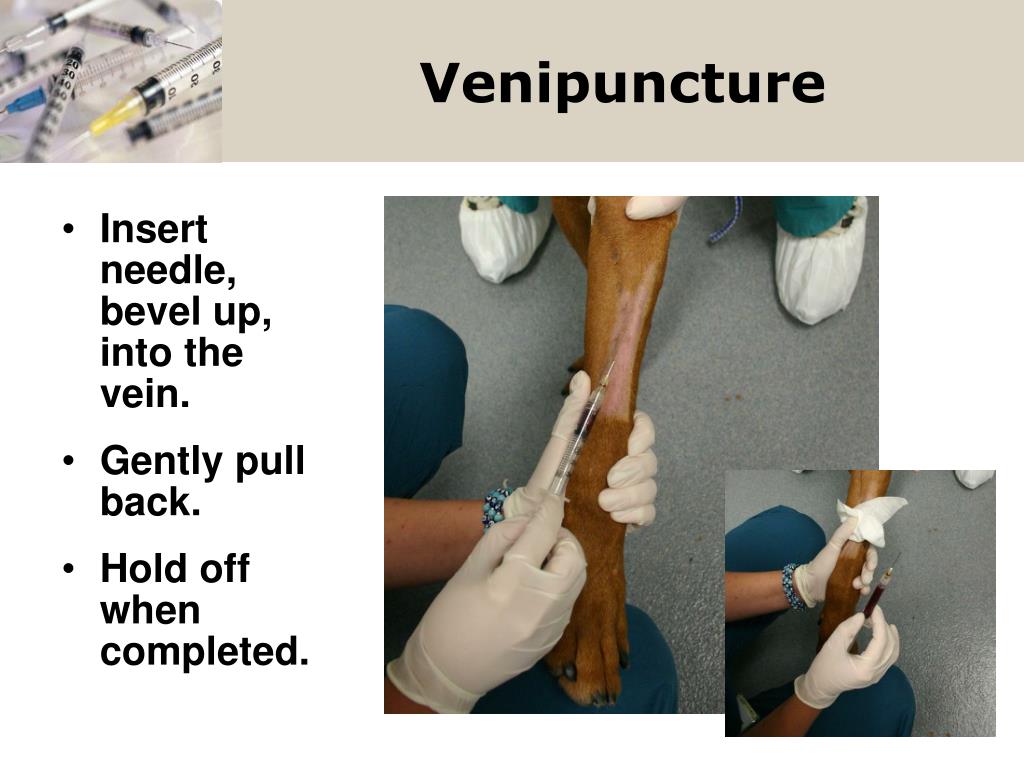

These involve delivering a medication into a person’s bloodstream gradually over time.

Healthcare professionals may also refer to a rapid injection as a push or a bolus. These involve inserting a dose of a drug directly into the person’s bloodstream. The following sections look at each of these in more detail. Place an access cap over the catheter, which allows them to administer medications without having to re-inject a needle.Ī peripheral line may be useful for both rapid injections and time-based infusions.Remove the needle, leaving the catheter in place.Push a small plastic catheter over the needle and into the vein.Inject a needle into the person’s vein.
Venipuncture sites diagram professional#
When placing a peripheral IV line, a healthcare professional will: Peripheral lineĪ peripheral line, or a peripheral venous catheter, is a common form of IV injection that is suitable for short-term treatment. The sections below look at each of these in more detail. If blood for haemoglobin testing is gathered with a capillary stick, a single-use sterile lancet should be used and then placed immediately in a sharps container (safety box ).A healthcare professional may deliver IV drugs or other substances through a peripheral line or a central line.
Venipuncture sites diagram skin#
Some bags include diversion pouches to sequester the first 20 ml of blood collected, to minimize contamination from skin flora and the skin core ( 52). –Ī closed collection system with a sterile blood collection bag containing anticoagulant, and with an integral tube and needle should be used. Fabric or textile carriers should be machine washable. Containers used to transport supplies and specimens should also be cleanable by disinfectants, such as sodium hypochlorite bleach solutions. –įurniture and equipment in the area of blood donation and processing should be made of cleanable surfaces (e.g. Such equipment includes blood pressure monitors, scales, donor couches or chairs, blood collection monitors or mixers, blood bag tube sealers, blood transportation boxes and blood bank refrigerators. These pathogens include ( 2, 5, 12, 14, 17, 23, 31):Īll equipment used for collection of blood donations should be regularly calibrated, maintained and serviced, as required.

Poor infection-control practices can lead to bacterial infection at the site where the needle was inserted into the skin ( 37).īoth patients and health workers can be exposed through phlebotomy to blood from other people, putting them at risk from bloodborne pathogens. The adverse events that have been best documented are in blood transfusion services, where poor venepuncture practice or anatomical abnormality has resulted in haematoma and injury to anatomical structures in the vicinity of the needle entry ( 35).Īnother issue for patients is that if a blood sample is poorly collected or destroyed during transportation, the results may be inaccurate and misleading to the clinician, or the patient may have to undergo the inconvenience of repeat testing ( 36).

Unsafe phlebotomy can cause adverse effects for patients such effects are rare, but range from pain or bruising at the site of puncture, to fainting, nerve damage and haematoma.


 0 kommentar(er)
0 kommentar(er)
